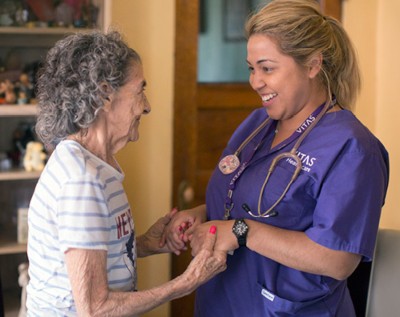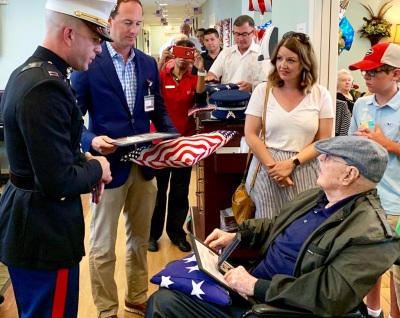VITAS Patient Gets Recognition, Rapt Audience at Bedside Salute
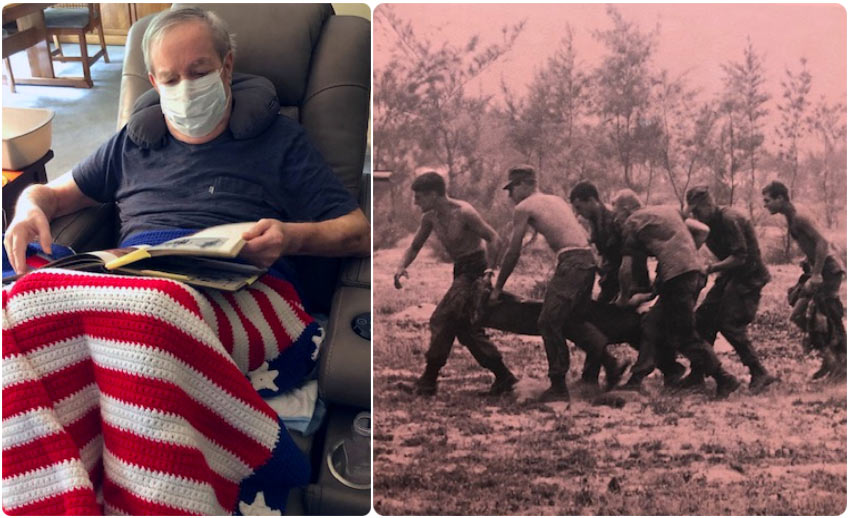
US Navy veteran William Slack, a VITAS patient, shared photos from his time serving in Vietnam during the 1960s. He is second from left on the medevac team carrying a patient above.
William Slack, a retired member of the US Navy, sat back in his recliner and flipped through a worn book until he came across the page he was searching for.
The old seaman then turned the book around to show his small—but fully attentive—audience.
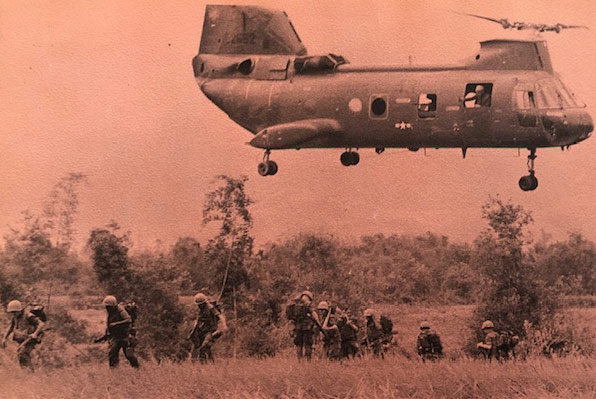
As a medevac operator, William ferried wounded soldiers from the battlefield to safety.
His wife, Roxanne, and Carole Quackenbush, a VITAS Healthcare admission liaison, peered closer as William pointed to a sepia-toned photograph of six men in military fatigues carrying a wounded soldier across a muddy field toward a medevac helicopter. His finger hovered above the second figure from the left.
It was hard to tell from the angle, but the skinny, shirtless kid certainly looked like Carole's patient.
Through a retrospective lens, the image came into sharper focus: There were William and his comrades, still young enough to be in high school, exposed not only to bullets and shrapnel but also to chemical compounds with consequences that wouldn’t be felt for decades.
As William shared the image with Carole and Roxanne, the look on his face was one of pure pride, not a hint of regret. He had found fulfillment in his duty to his country.
Now, it was Carole’s duty to make sure he received the recognition he was owed.
‘You Can See...Just How Proud He Was’
William joined the Navy at 17 and served in Vietnam from 1965-1968, stationed first on the USS Henrico and then on the USS Tripoli. As a medevac operator who ferried wounded soldiers from the battlefield to safety, he faced constant exposure to Agent Orange, a chemical defoliant that left millions of soldiers and civilians with long-lasting health complications.
A stroke brought William to VITAS in Cincinnati, but complications related to Agent Orange left him with additional pain and symptoms that hospice specializes in managing.
Carole had come to William and Roxanne’s home to perform a bedside salute, a commemorative ceremony that VITAS offers to all its veteran patients. For Vietnam veterans in particular, this ceremony is sometimes the first and only thanks they’ve ever received for their service. Many veterans came home from Vietnam to a divided and hostile country that often treated them with disdain, a harsh sentiment that many carried to the end of life.
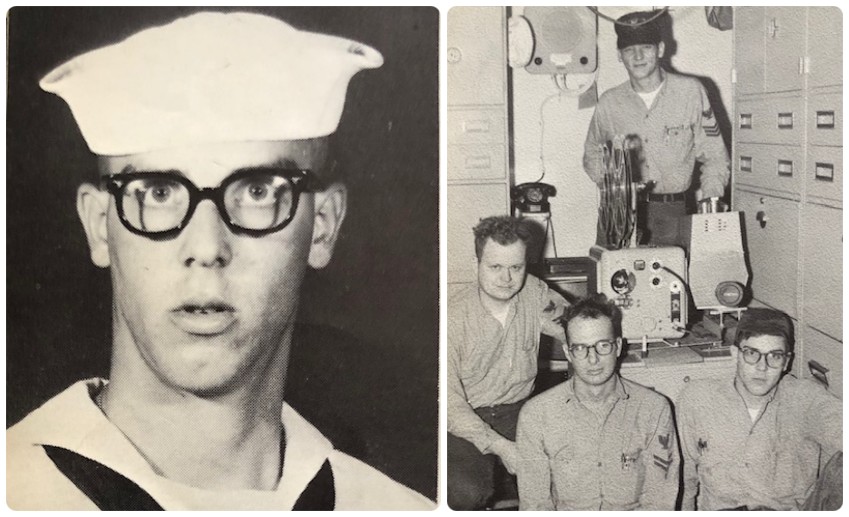
William's bootcamp yearbook photo, taken when he was 17 years old. In the photo at right, he is seated at far right.
William, however, didn’t seem to bear that emotional burden. Although he hadn’t looked through his military photo albums since the 1980s, his face lit up each time an image prompted a memory from boot camp or his tour in Vietnam.
Carole happily listened as he recounted the stories behind the shots.
“We spent almost the whole time looking through those books, which was so cool,” Carole says. “You can see in the picture just how proud he was to share his military accomplishments. They seemed to remind him of the camaraderie he felt toward the men and boys he served with.”
An Emotional Salute
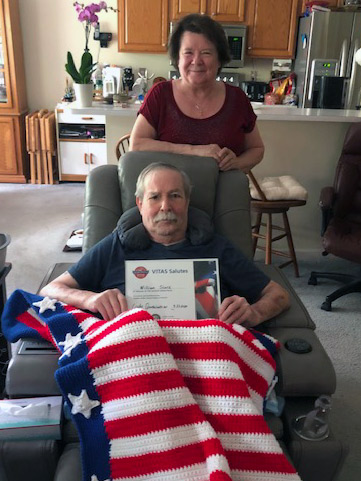
William rests at home with his VITAS certificate and patriotic afghan, with his wife, Roxanne, standing behind him.
While every bedside salute follows a similar format, no two ceremonies are completely alike. Elements of the proceedings are tailored specifically to the patient and their loved ones, and can occur at home, on a videoconferencing platform, in an assisted living or nursing facility, or in the hospital.
William's ceremony took place not at the bedside but beside his favorite recliner. Carole began by reciting a prayer for veterans and their families, and then presented a VITAS certificate commending William for his service.
Afterward, she issued the proud vet a VITAS challenge coin and a red-white-and-blue afghan, finally relieving him of duty with a stand-down order and salute.
Both William and Roxanne were “emotional and very tearful” as the ceremony wrapped up, Carole says.
“However, as William looked over the patriotic afghan and VITAS challenge coin, he began to smile.”
Carole reflected on Roxanne’s feelings toward the ceremony: “She’s very proud of him. I think going through those pictures reminded her of her husband’s brave sacrifice and reinforced to her the contributions that he made.”
Setting Roxanne’s Future at Ease
Part of Carole’s work with William involved connecting him with services from the US Department of Veterans Affairs (VA), ensuring he accesses the benefits he’s earned through his service. VITAS’ specialized approach to veteran care extends to their spouses and loved ones, too.
“I linked Roxanne with the appropriate people at the VA for veteran spouses’ benefits, such as life insurance, survivor compensation, and assistance with burial costs,” Carole explains. “This is our way of setting her future at ease.”
Additionally, whenever William passes, VITAS will provide bereavement support for Roxanne and any other family members for at least 13 months.
Until then, William and Roxanne will continue to receive ongoing VITAS support that meets their clinical, emotional, and spiritual needs, no matter how those needs manifest. Serving America’s bravest men and women near the end of life is Carole’s calling—and why at VITAS, Every Day Is Veterans Day®.

How to Choose a Hospice Provider
Choosing a hospice provider is one of the most important decisions you will make for yourself, a loved one and your family.
Get Our Checklist